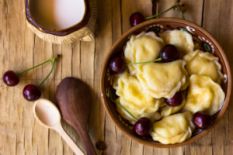The Carpathians
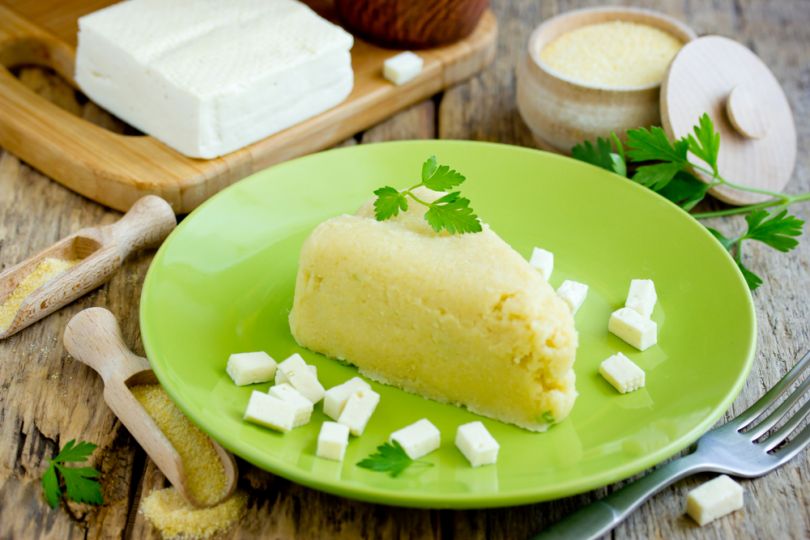 The highlands of the Carpathian Mountains have a rich history and are home to different nationalities and ethnic groups that managed to leave in peace throughout centuries. As the region borders no less than 4 countries - Romania, Slovakia, Hungary, and Moldova - the local cuisine brings together the best flavors of each cuisine.
The highlands of the Carpathian Mountains have a rich history and are home to different nationalities and ethnic groups that managed to leave in peace throughout centuries. As the region borders no less than 4 countries - Romania, Slovakia, Hungary, and Moldova - the local cuisine brings together the best flavors of each cuisine.
For Hutsuls and Boikos, the most populous ethnic groups of Ukrainian Carpathians, a meal is not just a way to tame hunger but also to communicate. Sharing a meal is still considered an important social gathering and it carries more importance than in urban areas of central Ukraine. The region’s classic dishes are traditionally prepared in large pots on the open flame or in the oven.
As for the most popular products, corn flour and brynza cheese are definitely the leaders in the Carpathians. Fresh mushrooms find their way in any hot dish as well as traditional salo, most often served as pork lard. As for the desserts, Ukrainian Carpathians are famous for honey making and making unique local jams called lekvar.
One of the most iconic Carpathian dishes, mamalyga, originally comes from Romanian cuisine. The porridge is made of yellow maize flour and is traditionally served with sour cream and brynza. The Hutsul dish has a special feature that should be noted: after it's cooked, you have to place it on a wooden board or a fresh towel instead of a plate so that mamalyga keeps its original flavor. The dish often replaces bread.
Polissya
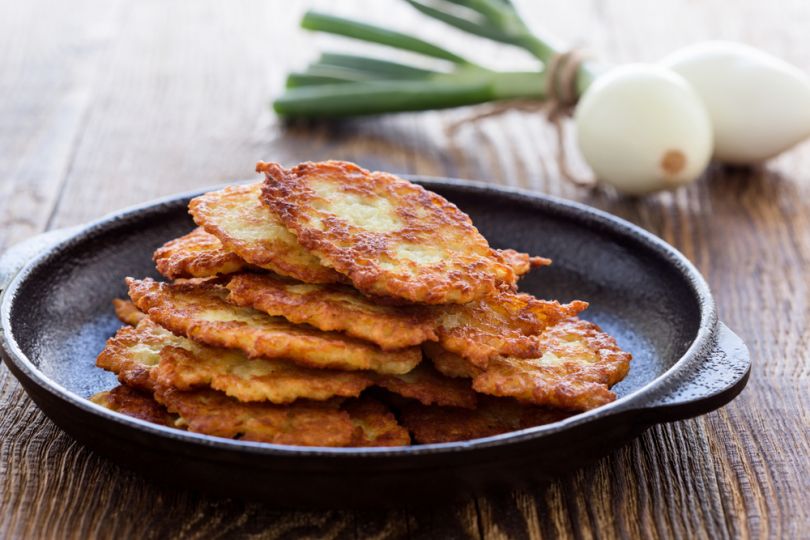 Polissya is a large region that stretches from Poland and Belarus to Ukraine and Russia. In Ukraine, Polissya grasps the northern areas of Volyn, Rivne, Zhytomyr, Kyiv, Chernihiv and Sumy regions. Due to its geographical peculiarities, the region is quite diverse in both culture and cuisine. Historically, dwellers of Polissya eat a lot of porridges, namely buckwheat and millet. The region's porridges are usually quite dense when paired with milk or pork lard.
Polissya is a large region that stretches from Poland and Belarus to Ukraine and Russia. In Ukraine, Polissya grasps the northern areas of Volyn, Rivne, Zhytomyr, Kyiv, Chernihiv and Sumy regions. Due to its geographical peculiarities, the region is quite diverse in both culture and cuisine. Historically, dwellers of Polissya eat a lot of porridges, namely buckwheat and millet. The region's porridges are usually quite dense when paired with milk or pork lard.
The most famous dish of Ukrainian cuisine, borshch, is also an iconic dish of Polissya. Here it's not only a meal but also a symbol of prosperity. Harvesting is another trait of the region that has survived through the centuries. In Polissia, it's even more popular than in the Carpathians: people still pick berries like blueberries, raspberries, blackberries, and cranberries to dry or make digestifs out of them. Mushroom picking is also widely spread in Polissia, that's why white mushrooms are often an ingredient in many dishes.
To talk about traditional beverages, the region is famous for kvass - usually a non-alcoholic drink made from bread rye. Authentic Ukrainian digestifs and tinctures - "nalyvkas" and "nastoyankas" - are popular here as well. The flavors range from cherry, cranberry, prunes to thyme, mint and Saint-John's-wort.
Deruny, or potato pancakes, are incredibly popular in northern and central regions of Ukraine. The name derives from the way of cooking: verb ‘derty’ means ‘to strip’ or ‘to skin’, which is exactly what Ukrainians do with potatoes to prepare this dish. The dish is so popular in the north of Ukraine that there's an annual International Deruny Festival in Korosten. The park that hosts the festival also boasts the only in Ukraine monument to the dish.
Central Ukraine
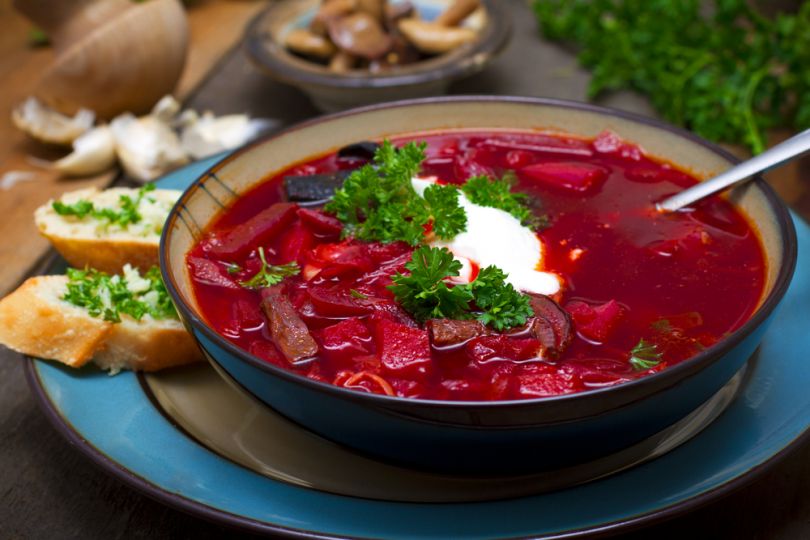 The center of Ukraine is famous for the country's most iconic dishes - borsht and varenyky. Borscht (sometimes "borshch", transliterated from Ukrainian) is a vegetable-based soup, made of beetroot, cabbage, tomatoes, potatoes and dill. Sometimes, meat or fish is added to the dish. Borscht has been one of the main dishes of Ukrainian cuisine way back since the 14th century.
The center of Ukraine is famous for the country's most iconic dishes - borsht and varenyky. Borscht (sometimes "borshch", transliterated from Ukrainian) is a vegetable-based soup, made of beetroot, cabbage, tomatoes, potatoes and dill. Sometimes, meat or fish is added to the dish. Borscht has been one of the main dishes of Ukrainian cuisine way back since the 14th century.
Apart from the classic Ukrainian red borscht recipe, where beetroot gives the soup its recognizable color, many dwellers of central Ukraine also love “green” borscht, where the main component is sorrel leaves. It is often served in summer and considered a ‘light’ dish. Red borscht is traditionally served with pampushky — small, fluffy buns often sprinkled with garlic and dill. Flaky dough with sweet taste helps to enhance the taste of borscht. If you look closely at the map of Ukrainian cuisine, you will notice that the further to the West, the fattier the dishes.
So how to cook Ukrainian borsht Kyiv-style? Keep to the golden middle. The soup’s main peculiarity is the absence of various additives like crushed garlic or salo (pork lard) that are usually spread in the South. If you really adore garlic, prepare a sauce to pour on pampushky - vegetable oil, water and minced garlic mixed together.
Varenyky is another staple of cuisine in central Ukraine. The traditional Ukrainian dumplings boast a variety of fillings from sweet like cherries to sour like Sauerkraut. Each Ukrainian host has an own recipe of varenyky, but the cooking method stays the same: wrapping unleavened dough around the filling. In the ancient times, varenyky were traditionally cooked with cheese, fried cabbage, boiled potatoes, poppy seeds, apples, cranberries, cherries and other berries. The traditions have survived until nowadays and hosts like to experiment with fillings. Sweet varenyky with cheese, fruits or berries are traditionally served with sour cream or riazhanka, Ukrainian fermented milk.
Western Ukraine
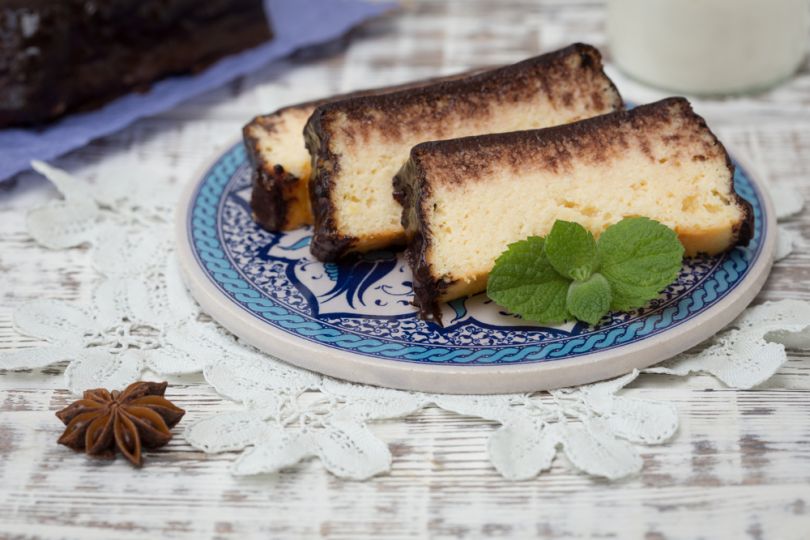 The cuisine of the west of Ukraine, just like the Carpathians, is a mix of numerous cultures. Locals learned new recipes and mixed traditions each time the region changed its geopolitical axis, so dishes in Western Ukraine are incredibly diverse.
The cuisine of the west of Ukraine, just like the Carpathians, is a mix of numerous cultures. Locals learned new recipes and mixed traditions each time the region changed its geopolitical axis, so dishes in Western Ukraine are incredibly diverse.
For example, while traditional Ukrainian syrnyk is asmall round sour cream pancake, traditional Lviv syrnyk is a bit different. Firstly, it looks nothing like the syrnyk people commonly know. Secondly, the taste is more refined thanks to the chocolate and raisins. The syrnyk is served in nearly all coffee shops and restaurants in Lviv and each has unique secrets often passed down by generations to make the dish unique.
One of the classics from Western Ukrainian cuisine is a strudel — a sweet dishborrowed from Vienna and re-engineered according to the local preferences. Like syrnyky, strudel in all their variety are served almost everywhere in Lviv. The most popular flavors are the classic apple strudel and Lviv special — cherry and walnuts, famous in Tsukernia café.
Lazanky is a dish brought to Lviv way back in the 16th century when the Italian queen Bona Sforza has arrived in the city to seek a perfect candidate for her son’s future marriage. She brought beloved Italian recipes and local chefs added a special spin to the classic lasagna. There are more than five flavors of lazanky: from meat and mushrooms to spinach and even poppy seeds. We will look into the most popular recipe with cabbage.
Southern Ukraine
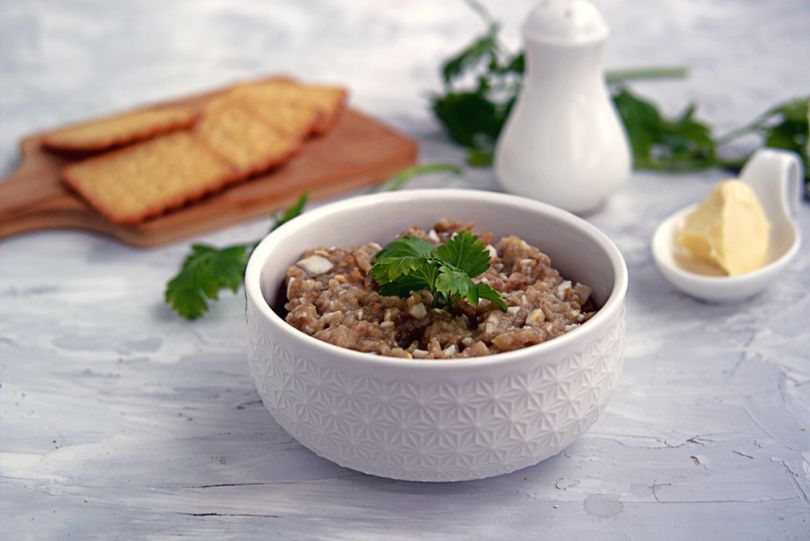 Thanks to the close proximity of the Black Sea, the South of Ukraine boasts numerous dishes with seafood. Besides, the region's most popular cities like Odesa also have cultural influence - it's a commonly known fact that Odesa hosts one of the biggest Jewish diasporas in Ukraine. That's why, local restaurants and hosts offer dishes from Ashkenazi Jewish cuisine.
Thanks to the close proximity of the Black Sea, the South of Ukraine boasts numerous dishes with seafood. Besides, the region's most popular cities like Odesa also have cultural influence - it's a commonly known fact that Odesa hosts one of the biggest Jewish diasporas in Ukraine. That's why, local restaurants and hosts offer dishes from Ashkenazi Jewish cuisine.
Vorschmack, also called forshmak, is a delicate dish of salty minced fish that's considered an Odesa classic. Locals often associate Vorschmack with their grandmas who’ve prepared the dish for every holiday. It was brought to Odesa by Ashkenazi Jews and instantly gained popularity among locals. One of the reasons is that the recipe is doable even for rookies.
Another dish brought to Odesa by Ashkenazi Jews, gefilte fish is essentially minced meat stuffed inside the fish skin and served with vegetables. There are many variations of the dish, but Odesa locals keep to the traditional way. The hosts usually start with cutting off the fish head, carefully taking out the insides without cutting the belly and separating the skin from the meat. Then, a mixture of ground meat, chopped onion, raw egg, semolina, salt and pepper is stuffed in the fish.
Summer dishes in Southern Ukraine usually include rapa whelk - this sea snail is commonly found in the Black Sea and is often caught by local fishermen. While kids love it for the beautiful shells, adults mostly enjoy rapa whelk as a dish, usually baked and served with chopped garlic, fried onion, spices and sour cream. It is often served in local restaurants as well. Another favorite summer dish in Odesa, as well as Kherson, is eggplant caviar. The easy recipe makes it one of the most popular dishes prepared at home. It can be served as an appetizer, a dip for vegetables or a spread for toasts.
Eastern Ukraine
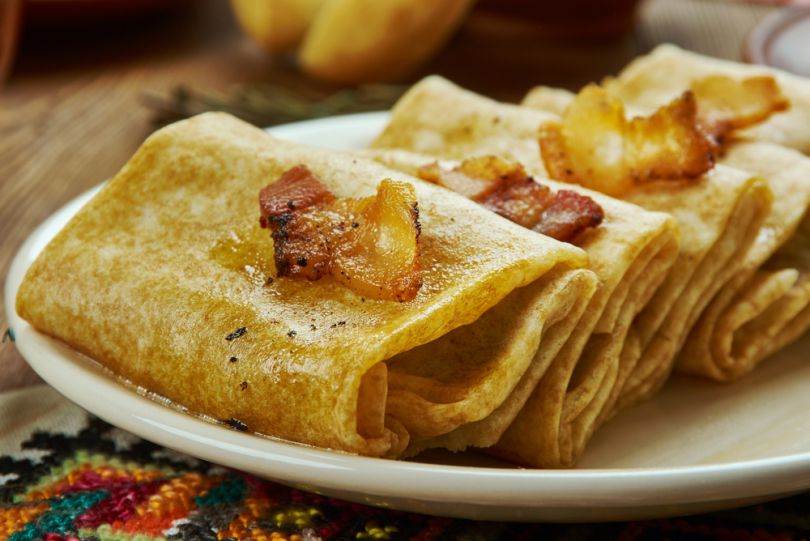 Eastern Ukraine has encompassed the regional classics of the whole country: locals enjoy varenyky, deruny and borsht no less than any other Ukrainian. One of the Ukrainian cuisine classics that is especially beloved in the East is nalysnyky. The dish is sometimes unfairly overlooked by many reviewers of local cuisine. Nalysnyky are essentially rolled thin crêpes with cottage cheese, sometimes topped with jam or varennya in Ukrainian for extra sweetness. The other popular fillings include cabbage, mushrooms, caviar, and berries, but sweet cottage cheese stays the classical one throughout centuries.
Eastern Ukraine has encompassed the regional classics of the whole country: locals enjoy varenyky, deruny and borsht no less than any other Ukrainian. One of the Ukrainian cuisine classics that is especially beloved in the East is nalysnyky. The dish is sometimes unfairly overlooked by many reviewers of local cuisine. Nalysnyky are essentially rolled thin crêpes with cottage cheese, sometimes topped with jam or varennya in Ukrainian for extra sweetness. The other popular fillings include cabbage, mushrooms, caviar, and berries, but sweet cottage cheese stays the classical one throughout centuries.
To talk about main dishes, okroshka is a serious rival to borsht in Eastern Ukraine. The cold soup is traditionally associated with Russian cuisine. Okroshka is typically served in summer, as it is a cold soup with raw vegetables like radish, cucumbers, boiled potatoes and eggs. Some hosts add meat like veal or leave it vegetarian. Another peculiarity of okroshka is adding kvass - a traditional Slavic fermented beverage made from rye bread.
Another popular beverage in Eastern Ukraine is uzvar, which is traditionally made of dried fruits and berries, most popular being apples, pears, cherries. Sometimes raisins and spice like cinnamon are added to enhance the taste. Diluting boiled fruits and berries with honey is what makes uzvar so special and sweet. It is traditionally served cold, though the hot option is allowed as well.
Photo source: shutterstock.com. All images belong to their rightful authors.

